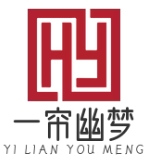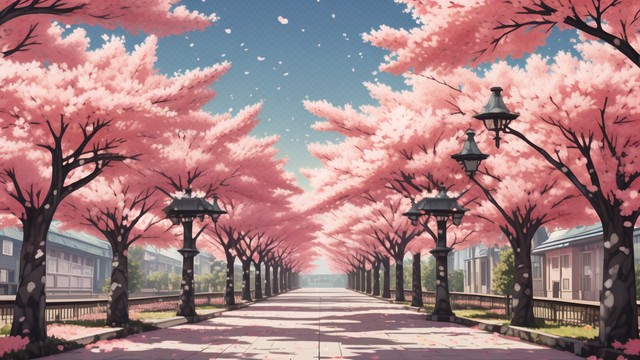合肥西装定制victory-合肥西装定制
介绍合肥的文言文

1. 赞美合肥的诗句
1、《晋·谢玄》 年代: 唐 作者: 孙元晏 百万兵来逼合肥,谢玄为将统雄师。
旌旗首尾千馀里,浑不消他一局棋。 2、《次姜尧章饯徐南卿韵二首》 年代: 宋 作者: 陈造 姜郎未仕不求田,倚赖生涯九万笺。
稛载珠玑肯分我,北关当有合肥船。 3、《合肥怀古三首》 年代: 宋 作者: 吴资 合肥一都会,世号征战地。
我来值明时,不识兵革事。 4、《淡黄柳》 年代: 宋 作者:姜夔 客居合肥南城亦阑桥之西,巷陌凄凉,与江左异;惟柳色夹道,依依可怜。
因度此曲,以纾客怀。 空城晓角,吹入垂杨陌。
马上单衣寒恻恻。看尽鹅黄嫩绿,都是江南旧相识。
正岑寂,明朝又寒食。强携酒、小桥宅,怕梨花落尽成秋色。
燕燕飞来,问春何在?惟有池塘自碧。 5、《过护城》 年代: 宋 作者: 宋瑄 古道当长坂,肩舆入暮天。
苍茫闻驿鼓,冷落见炊烟。 冻烛寒无焰,泥炉湿未然。
正思江槛外,闲却钓鱼船。
2. 有哪些有关合肥的诗句有关合肥的诗句有:1、百万兵来逼合肥 唐孙元晏 《晋·谢玄》2、北关当有合肥船 宋陈造 《次姜尧章饯徐南卿韵二首》3、合肥一都会 宋吴资 《合肥怀古三首》4、吴人筑合肥 宋张祁 《庐州诗》1、百万兵来逼合肥 唐孙元晏 《晋·谢玄》百万兵来逼合肥,谢玄为将统雄师。
旌旗首尾千馀里,浑不消他一局棋。2、北关当有合肥船 宋陈造 《次姜尧章饯徐南卿韵二首》姜郎未仕不求田,倚赖生涯九万笺。
稛载珠玑肯分我,北关当有合肥船。3、合肥一都会 宋吴资 《合肥怀古三首》合肥一都会,世号征战地。
我来值明时,不识兵革事。
3. 请介绍一下合肥“合肥”地名的由来
“合肥”名称之由来,说法有二。北魏郦道元《水经注》云:夏水暴涨,施(今南淝河)合于肥(今东淝河),故曰合肥。这是一种说法。 唐代有人提出另一种说法,淝水出鸡鸣山,北流二十里分而为二,其一东南流(南淝河),经过这里入巢湖;其一西北支(东淝河),二百里 出寿春入淮河。《尔雅》上指出“归异出同曰肥”。二水皆曰肥,合于一源,分而为二,故曰合肥。
“合肥”地名的沿革
秦置合肥县,属九江郡。曾为扬州治。西晋属淮南郡。东晋改汝阴县。隋初复改合肥县,为庐州治所。宋为庐州,元为庐州路,明为庐州 府治。清为江南省庐州府治,1912年废合肥县,分置肥东、肥西县。1988年辖东市、西市、中市、郊区4区和长丰、肥东、肥西3县。
4. 形容“合肥”的诗句有哪些《次姜尧章饯徐南卿韵二首》
年代: 宋
作者: 陈造
姜郎未仕不求田,
倚赖生涯九万笺。
稛载珠玑肯分我,
北关当有合肥船。
《合肥怀古三首》
年代: 宋
作者: 吴资
合肥一都会,
世号征战地。
我来值明时,
不识兵革事。
《晋·谢玄》
年代: 唐
作者: 孙元晏
百万兵来逼合肥,
谢玄为将统雄师。
旌旗首尾千馀里,
浑不消他一局棋。
5. 请介绍一下合肥合肥是一座有2000多年历史的文化古城,历史悠久,名人辈出,具有“淮右襟喉,江南唇齿”的战略地位,常为兵家必争之地。“合肥”因东淝河与南淝河在此汇合而得名,素以“三国旧地、包拯故里”闻名于世。合肥之名,最早出现在大文学家、史学家司马迁的《史记·货殖列传》中:“合肥受南北潮,皮革、鲍、木输会也”。秦汉之交,合肥正式建立“合肥县”,属九江郡。东汉刘秀升合肥为侯国,三国时为扬州治所,三国时魏将张辽大败孙权十万大军的逍遥津战役,即发生在这里。明清时为庐州府治,故又别称为“庐州”。自东汉末以来,合肥数为州郡治所,一直是江淮地区重要的行政中心和军事重镇。合肥解放后由县设市,三年后安徽省人民 *** 正式成立于合肥市。
6. 关于介绍合肥的作文可怜的娃,搞不好哥是你校友,偶八中的,如今偶在浙江,写这篇作文纯粹是怀念我记忆中的故乡。
歌声中的庐州
“樱花飞舞的初春,半空中落英缤纷,蓝紫色桔梗似将画面停顿。”听着许嵩的歌,脑海中又一次浮现出那黄昏中的杏花公园,看着暮色中的藏舟浦书型的石刻,有时候心血来潮摸摸上面的字,一枚枚的像历史的肩章,我会想起千年之前,这里是三国旧地,黄沙战场,张辽在这里横刀立马,曹操在这里持觞谈兵,如今,只有这无声的石刻深嵌时光的秘密,在微凉的街灯下,向未来摊开。
“站在合肥三孝口天桥,俯视仰视 。科教书店觊觎影院,和女人街口深情对视,车水马龙和急速流转的乌云,一样生不逢时。”这首布拉格小调,立刻把我的思绪带入快节奏的当下,但是合肥是一座快与慢并存的现代都市,急速的流光投影和延长婉转的小巷并存,眼花缭乱的女人街和宁静温馨的爱知书店并存,人头攒动的车站和清幽的环城公园并存,快的是一种发展的活力,慢的是一种文化的沉淀。
当然,我还喜欢蜀山的冬日晴雪,喜欢逍遥津的深秋梧叶,也喜欢外雨花塘淡淡的夏荷,喜欢瑶海公园春日的白山,但这一切,都比不上我对赤阑桥的迷恋。宋代词人姜夔在赤阑桥写下些许的文字温暖着我的记忆:
肥水东流无尽期,当初不合种相思。
梦中未比丹青见,暗里忽惊山鸟啼。
春未绿,鬓先丝,人间别久不成悲。
谁教岁岁红莲夜,两处沉吟各自知。
我想,在很久以前,这也是一首歌,一首哀婉无奈的歌,唱着桥边的红药为谁而生,因为联姻了我们身居其中的城市,而有了绵绵不尽的寄托。肥水无尽,像一支清丽的歌,永远带着庐州浸透岁月的水印。
7. 写一篇介绍安徽省省会合肥的文章,至少五句话From the 8th to the 6th century BC, Hefei was the site of the *** all state of Shu, later a part of the Chu kingdom. Many archaeological finds dating from this period have been made. The name Hefei was first given to the county set up in the area under the Han dynasty in the 2nd century BC. During the 4th to the 6th century AD, this crucial border region beeen northern and southern states was much fought over; its name and administrative status were consequently often changed. During the Sui (581–e69da5e887aae799bee5baa631333262346437618) and Tang (618–907) periods, it became the seat of Lu prefecture — a title it kept until the 15th century, when it became a superior prefecture named Luzhou.In 3rd century AD, the famous Three Kingdoms battle, Battle of Hefei, was fought at what is currently Leisure Ford (逍遥津) in Hefei. General Zhang Liao of the Kingdom of Wei manding 800 picked cavalry defeated the 200,000-man army of the Kingdom of Wu. Several decades of warring in Hefei beeen Wu and Wei followed this battle.The present city dates from the Song dynasty (960–1126), the earlier Hefei having been some distance farther north. During the 10th century, it was for a while the capital of the independent Wu kingdom (902–938) and was an important center of the Southern Tang state (937–975).After 1127 it became a center of the defenses of the Southern Song dynasty (1126–1279) against the Jin (Jurchen) invaders, as well as a flourishing center of trade beeen the o states. When the Chinese Republic was founded in 1911, the superior prefecture was abolished, and the city took the name of Hefei.The city was known as Luzhou (庐州; pinyin Lúzhōu) during the Ming and Qing Dynasties (after 14th century to 19th century). Hefei was the temporary capital for Anhui from 1853 to 1862. It was renamed as Hefei County in 1912. Following the Chinese victory in the Second Sino-Japanese War in 1945, Hefei was made the capital of Anhui.Before World War II, Hefei remained essentially an administrative center and the regional market for the fertile plain to the south. It was a collecting center for grain, beans, cotton, and hemp, as well as a center for handicraft industries manufacturing cloth, leather, bamboo goods, and ironware.The construction in 1912 of the Tianjin–Puzhou railway, farther east, for a while made Hefei a provincial backwater, and much of its importance passed to Bengbu. In 1932–36, however, a Chinese pany built a railway linking Hefei with Yuxikou (on the Yangtze opposite Wuhu) to the southeast and with the Huai River at Huainan to the north. While this railway was built primarily to exploit the rich coalfield in northern Anhui, it also did much to revive the economy of the Hefei area by taking much of its produce to Wuhu and Nanjing.Although Hefei was a quiet market town of only about 30,000 in the mid-1930s, its population grew more than tenfold in the following 20 years. The city's administrative role was strengthened by the transfer of the provincial from Anqing in 1949, but much of its new growth derived from its development as an industrial city. A cotton mill was opened in 1958, and a thermal generating plant, using coal from Huainan, was established in the early 1950s. It also became the seat of an industry producing industrial chemicals and chemical fertilizers. In the late 1950s an iron and steel plex was built. In addition to a machine-tool works and engineering and agricultural machinery factories, the city has developed an aluminum industry and a variety of light industries. There are several universities based in the city.。
如何用英语介绍合肥
1.Hefei is a prefecture-level city and the capital of Anhui province, China. Located in central Anhui, it borders Huainan to the north, Chuzhou to the northeast, Chaohu to the southeast and Lu'an to the west. Hefei administers 7 county-level divisions, including 4 districts and 3 counties, namely Yaohai District, Luyang District, Shushan District, Baohe District, Changfeng County, Feidong County and Feixi County. Although Hefei was a quiet market town of only about 30,000 in the mid-1930s, its population grew more than tenfold in the following 20 years. The city's administrative role was strengthened by the transfer of the provincial from Anqing in 1949, but much of its new growth derived from its development as an industrial city. A cotton mill was opened in 1958, and a thermal generating plant, using coal from Huainan, was established in the early 1950s. It also became the seat of an industry producing industrial chemicals and chemical fertilizers. In the late 1950s an iron and steel complex was built. In addition to a machine-tool works and engineering and agricultural machinery factories, the city has developed an aluminum industry and a variety of light industries. There are several universities based in the city.
2.From the 8th to the 6th century BC, Hefei was the site of the small state of Shu, later a part of the Chu kingdom. Many archaeological finds dating from this period have been made. The name Hefei was first given to the county set up in the area under the Han dynasty in the 2nd century BC. During the 4th to the 6th century AD, this crucial border region between northern and southern states was much fought over; its name and administrative status were consequently often changed. During the Sui (581–618) and Tang (618–907) periods, it became the seat of Lu prefecture — a title it kept until the 15th century, when it became a superior prefecture named Luzhou.
In 3rd century AD, the famous Three Kingdoms battle, Battle of Hefei, was fought at what is currently Leisure Ford (逍遥津) in Hefei. General Zhang Liao of the Kingdom of Wei commanding 800 picked cavalry defeated the 200,000-man army of the Kingdom of Wu. Several decades of warring in Hefei between Wu and Wei followed this battle.
The present city dates from the Song dynasty (960–1126), the earlier Hefei having been some distance farther north. During the 10th century, it was for a while the capital of the independent Wu kingdom (902–938) and was an important center of the Southern Tang state (937–975).
After 1127 it became a center of the defenses of the Southern Song dynasty (1126–1279) against the Jin (Jurchen) invaders, as well as a flourishing center of trade between the two states. When the Chinese Republic was founded in 1911, the superior prefecture was abolished, and the city took the name of Hefei.
The city was known as Luzhou (庐州; pinyin Lúzhōu) during the Ming and Qing Dynasties (after 14th century to 19th century). Hefei was the temporary capital for Anhui from 1853 to 1862. It was renamed as Hefei County in 1912. Following the Chinese victory in the Second Sino-Japanese War in 1945, Hefei was made the capital of Anhui.
Before World War II, Hefei remained essentially an administrative center and the regional market for the fertile plain to the south. It was a collecting center for grain, beans, cotton, and hemp, as well as a center for handicraft industries manufacturing cloth, leather, bamboo goods, and ironware.
The construction in 1912 of the Tianjin–Puzhou railway, farther east, for a while made Hefei a provincial backwater, and much of its importance passed to Bengbu. In 1932–36, however, a Chinese company built a railway linking Hefei with Yuxikou (on the Yangtze opposite Wuhu) to the southeast and with the Huai River at Huainan to the north. While this railway was built primarily to exploit the rich coalfield in northern Anhui, it also did much to revive the economy of the Hefei area by taking much of its produce to Wuhu and Nanjing.
Although Hefei was a quiet market town of only about 30,000 in the mid-1930s, its population grew more than tenfold in the following 20 years. The city's administrative role was strengthened by the transfer of the provincial from Anqing in 1949, but much of its new growth derived from its development as an industrial city. A cotton mill was opened in 1958, and a thermal generating plant, using coal from Huainan, was established in the early 1950s. It also became the seat of an industry producing industrial chemicals and chemical fertilizers. In the late 1950s an iron and steel complex was built. In addition to a machine-tool works and engineering and agricultural machinery factories, the city has developed an aluminum industry and a variety of light industries. There are several universities based in the city.
声明:本站所有文章资源内容,如无特殊说明或标注,均为采集网络资源。如若本站内容侵犯了原著者的合法权益,可联系本站删除。











